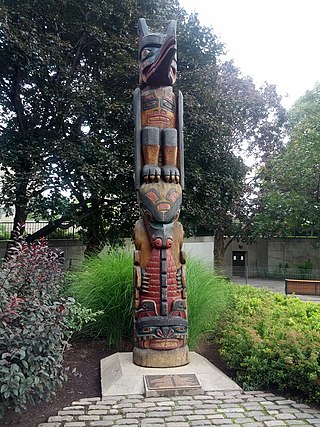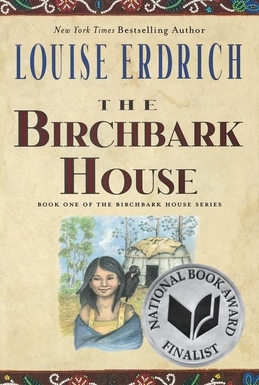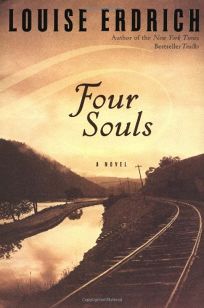
Karen Louise Erdrich is an American author of novels, poetry, and children's books featuring Native American characters and settings. She is an enrolled member of the Turtle Mountain Band of Chippewa Indians, a federally recognized tribe of Ojibwe people.

Anishinaabe traditional beliefs cover the traditional belief system of the Anishinaabeg peoples, consisting of the Algonquin/Nipissing, Ojibwa/Chippewa/Saulteaux/Mississaugas, Odawa, Potawatomi and Oji-Cree, located primarily in the Great Lakes region of North America.

A totem is a spirit being, sacred object, or symbol that serves as an emblem of a group of people, such as a family, clan, lineage, or tribe, such as in the Anishinaabe clan system.

Gerald Robert Vizenor is an American writer and scholar, and an enrolled member of the Minnesota Chippewa Tribe, White Earth Reservation. Vizenor also taught for many years at the University of California, Berkeley, where he was Director of Native American Studies. With more than 30 books published, Vizenor is Professor Emeritus at the University of California, Berkeley, and Professor of American Studies at the University of New Mexico.

The Anishinaabe are a group of culturally related Indigenous peoples present in the Great Lakes region of Canada and the United States. They include the Ojibwe, Odawa, Potawatomi, Mississaugas, Nipissing and Algonquin peoples. The Anishinaabe speak Anishinaabemowin, or Anishinaabe languages that belong to the Algonquian language family.

Nanabozho, also known as Nanabush, is a spirit in Anishinaabe aadizookaan, particularly among the Ojibwe. Nanabozho figures prominently in their storytelling, including the story of the world's creation. Nanabozho is the Ojibwe trickster figure and culture hero.
Kimberly M. Blaeser is a Native American poet and writer enrolled in the White Earth Band of the Minnesota Chippewa Tribe. She was the Wisconsin Poet Laureate 2015–16.

Love Medicine is Louise Erdrich's debut novel, first published in 1984. Erdrich revised and expanded the novel in subsequent 1993 and 2009 editions. The book follows the lives of five interconnected Ojibwe families living on fictional reservations in Minnesota and North Dakota. The collection of short stories in the book spans six decades from the 1930s to the 1980s. Love Medicine garnered critical praise and won numerous awards, including the 1984 National Book Critics Circle Award.
Jim Northrup was an Anishinaabe newspaper columnist, poet, performer, and political commentator from the Fond du Lac Indian Reservation in Minnesota. His Anishinaabe name was "Chibenashi".
The Anishinaabe, like most Algonquian-speaking groups in North America, base their system of kinship on clans or totems. The Ojibwe word for clan was borrowed into English as totem. The clans, based mainly on animals, were instrumental in traditional occupations, intertribal relations, and marriages. Today, the clan remains an important part of Anishinaabe identity. Each clan is forbidden from harming its representation animal by any means, as it is a bad omen to do so.

David Treuer (Ojibwe) is an American writer, critic, and academic. As of 2019, he had published seven books; his work published in 2006 was noted as among the best of the year by several major publications. He published a book of essays in 2006 on Native American fiction that stirred controversy by criticizing major writers of the tradition and concluding, "Native American fiction does not exist."
Gordon Henry Jr. is a poet and fiction writer.
Among the Anishinaabe people, the Teachings of the Seven Grandfathers, also known simply as either the Seven Teachings or Seven Grandfathers, is a set of teachings that demonstrates what it means to live a “Good Life.” They detail human conduct towards others, the Earth, and all of Nature. Originating from a traditional Potawatomi and Ojibwe story, these teachings are not attributed to any specific creator. The story, and the teachings have been passed on orally by elders for centuries. An Ojibwe Anishinaabe man, Edward Benton-Banai, describes an in-depth understanding of what each means, in his novel The Mishomis Book.

William Whipple Warren was a historian, interpreter, and legislator in the Minnesota Territory. The son of Lyman Marcus Warren, an American fur trader and Mary Cadotte, the Ojibwe-Metis daughter of fur trader Michel Cadotte, he was of Ojibwe and French descent. William lived in two cultures, because his father was white, he was not considered Ojibwe, but an Ojibwe "relative", because in the Ojibwe patrilineal culture, inheritance and property were passed through the paternal line. His mother was Ojibwe and he learned her culture from her family. He is the first historian of the Ojibwe people in the European tradition.

Bearheart: The Heirship Chronicles is a 1990 novel by Gerald Vizenor; it is a revised version of his 1978 debut novel Darkness in Saint Louis: Bearheart. The novel is a part of the Native American Renaissance and is considered one of the first Native American novels to introduce a trickster figure into a contemporary setting. Vizenor drew from trickster traditions from various Native American tribes, such as Nanabozho (Anishinaabe) and Kachina (Pueblo).
Margaret A. Noodin (née O’Donnell) is an American poet and Anishinaabemowin language teacher. She is a professor of English and American Indian studies at the University of Wisconsin–Milwaukee and Associate Dean of the Humanities. She also directs a tribal Head Start program in Minnesota.

The Birchbark House is a 1999 indigenous juvenile realistic fiction novel by Louise Erdrich, and is the first book in a five book series known as The Birchbark series. The story follows the life of Omakayas and her Ojibwe community beginning in 1847 near present-day Lake Superior. The Birchbark House has received positive reviews and was a 1999 National Book Award Finalist for young people's fiction.
Linda LeGarde Grover is an Anishinaabe novelist and short story writer. An enrolled member of the Bois Forte Band of the Minnesota Chippewa Tribe, she is a professor of American Indian Studies at the University of Minnesota Duluth, as well as a columnist for the Duluth News Tribune.

Four Souls (2004) is an entry in the Love Medicine series by Chippewa (Ojibwe) author Louise Erdrich. It was written after The Master Butcher’s Singing Club (2003) and before The Painted Drum (2005); however, the events of Four Souls take place after Tracks (1988). Four Souls follows Fleur Pillager, an Ojibwe woman, in her quest for revenge against the white man who stole her ancestral land. Fleur appears in many books in the series, and this novel takes place directly after her departure from the Little No Horse reservation at the end of Tracks. The novel is narrated by three characters, Nanapush, Polly Elizabeth, and Margaret, with Nanapush narrating all of the odd numbered chapters and Polly Elizabeth taking all but the last two even numbered chapters.












